Cancer survival rates have improved significantly over the past 25 years, according to a wide-ranging report from the Australian Institute of Health and Welfare (AIHW), but there has also been what one researcher says are concerning rises in some diagnoses.
The report, published on Wednesday, looked at cancer prevalence, survival rates, incidence, mortality and risk for more than 100 different types of cancer over time and across multiple factors including age, state and territory and country of birth.
The number of cancer diagnoses in Australia has increased markedly in recent decades, which is partly due to increases in population size and an increasing number of people reaching older ages.
In 2000, there were around 88,000 cases of cancer diagnosed. In 2025, it's estimated that 170,000 cases will be diagnosed.
The report found close to one million people have been diagnosed with cancer in the last 10 years, and this year, around three of every 10 deaths are estimated to be due to cancer.
Professor Bernard Stewart, a cancer researcher from the University of NSW, told SBS News that data on the incidence of cancer and deaths due to cancer provide "crucial insight" for the community.
"The incidence can, in some cases, give us an insight into causes of cancer. The deaths give us insight into the success or otherwise we have had of treating particular cancer types, in so far as establishing cancer survivorship — if not cure," he said.
Stewart said the amount of data available about the incidence of cancer and deaths caused by it reflects the extent of community concern.
"The community has determined worldwide and in high-income countries in particular that cancer is of such concern we, the community, want to know what's going on," he said.
The recording of cancer incidence is mandatory in all Australian states and territories, with the recording of cancer deaths also captured in mortality data.
So, what else did the data show?
Survival rates
Survival rates for cancer have increased as a whole in Australia over the past three decades.
Between 2000 and 2025, the cancer mortality rate (standardised for an ageing population) decreased from 257 deaths per 100,000 to an estimated 194 deaths.
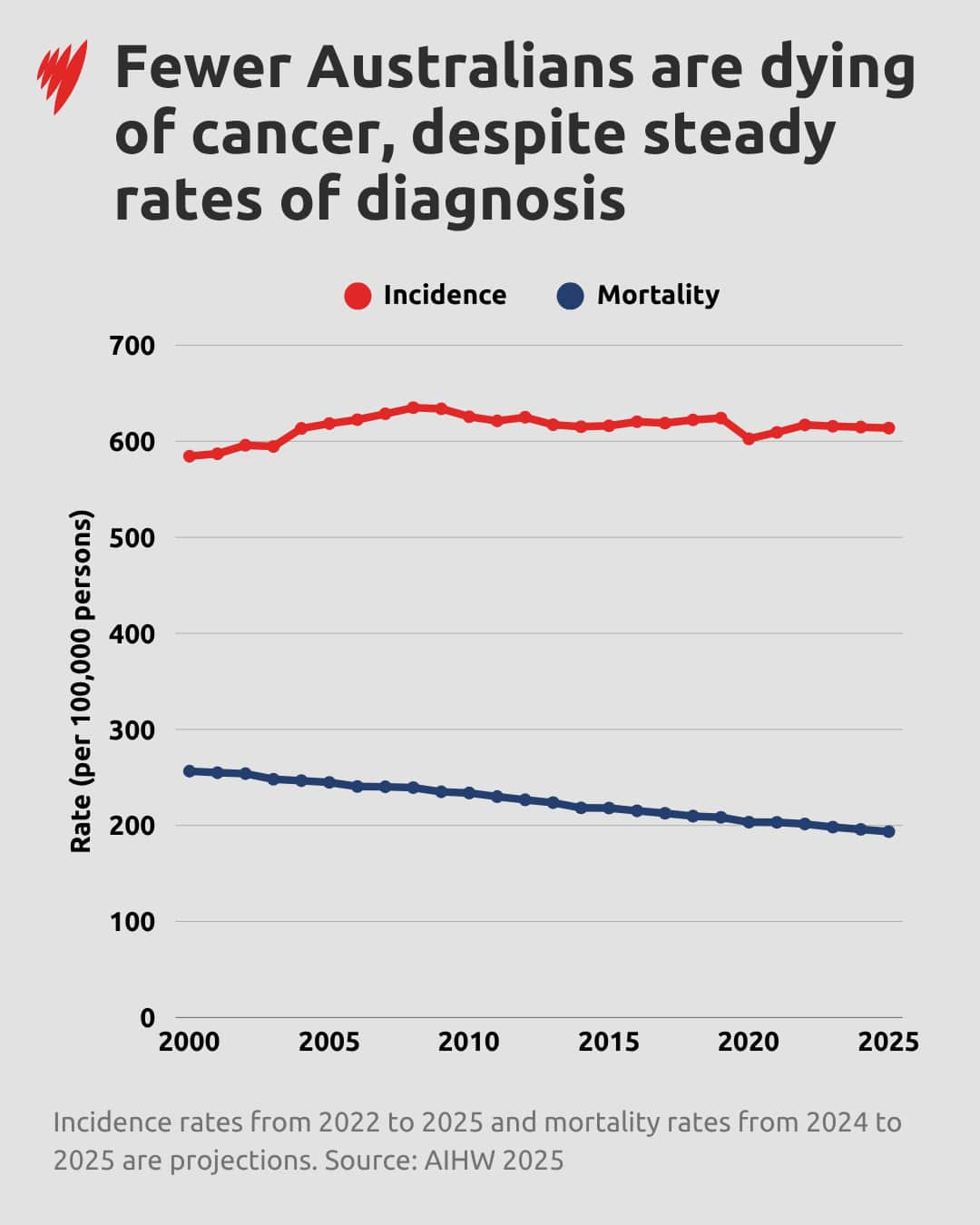
Source: SBS News
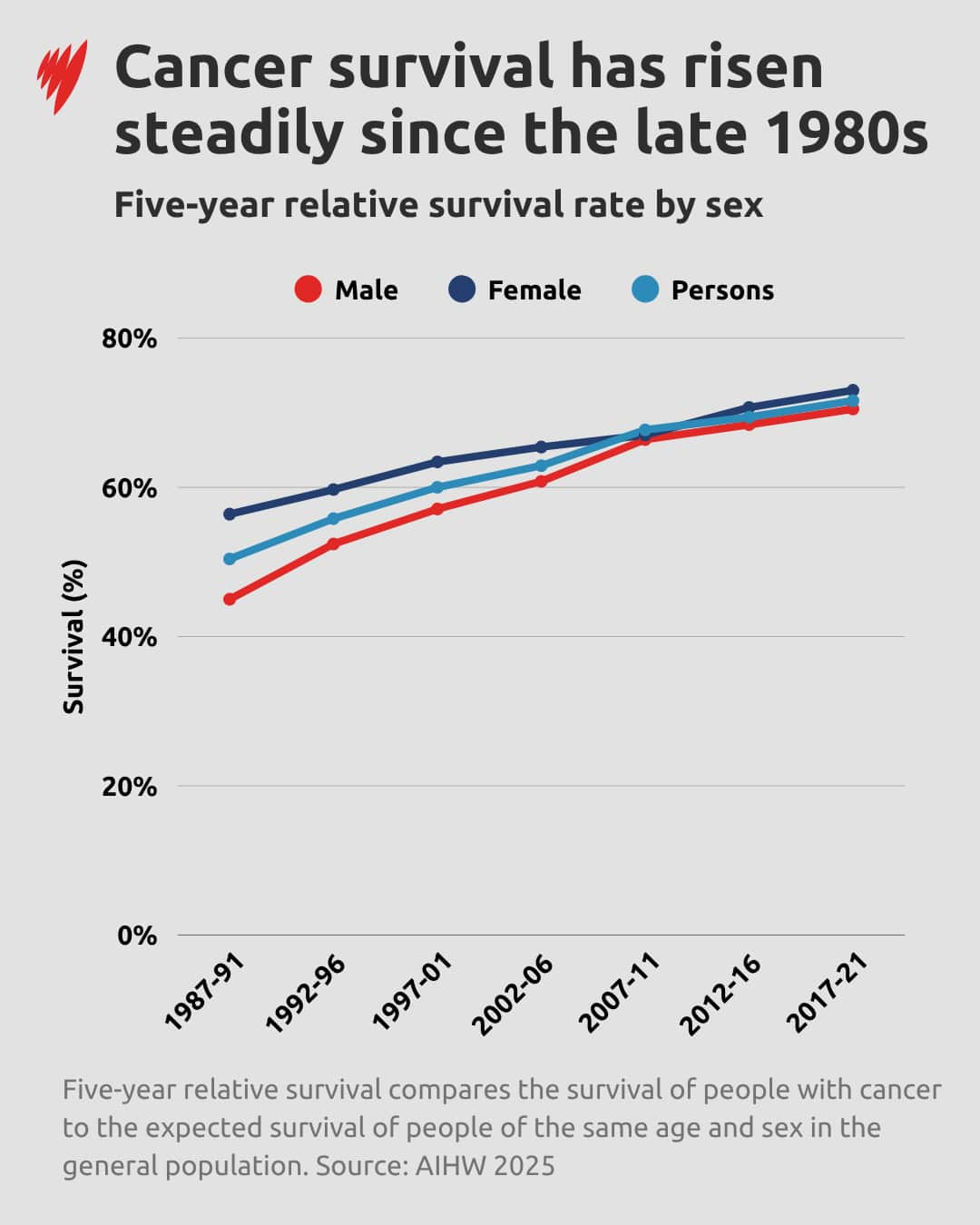
Source: SBS News
Over the same period, the five-year survival rate for breast cancer among women improved from 75 to 93 per cent and, for men diagnosed with prostate cancer, the five-year survival rate increased from 60 to 96 per cent.
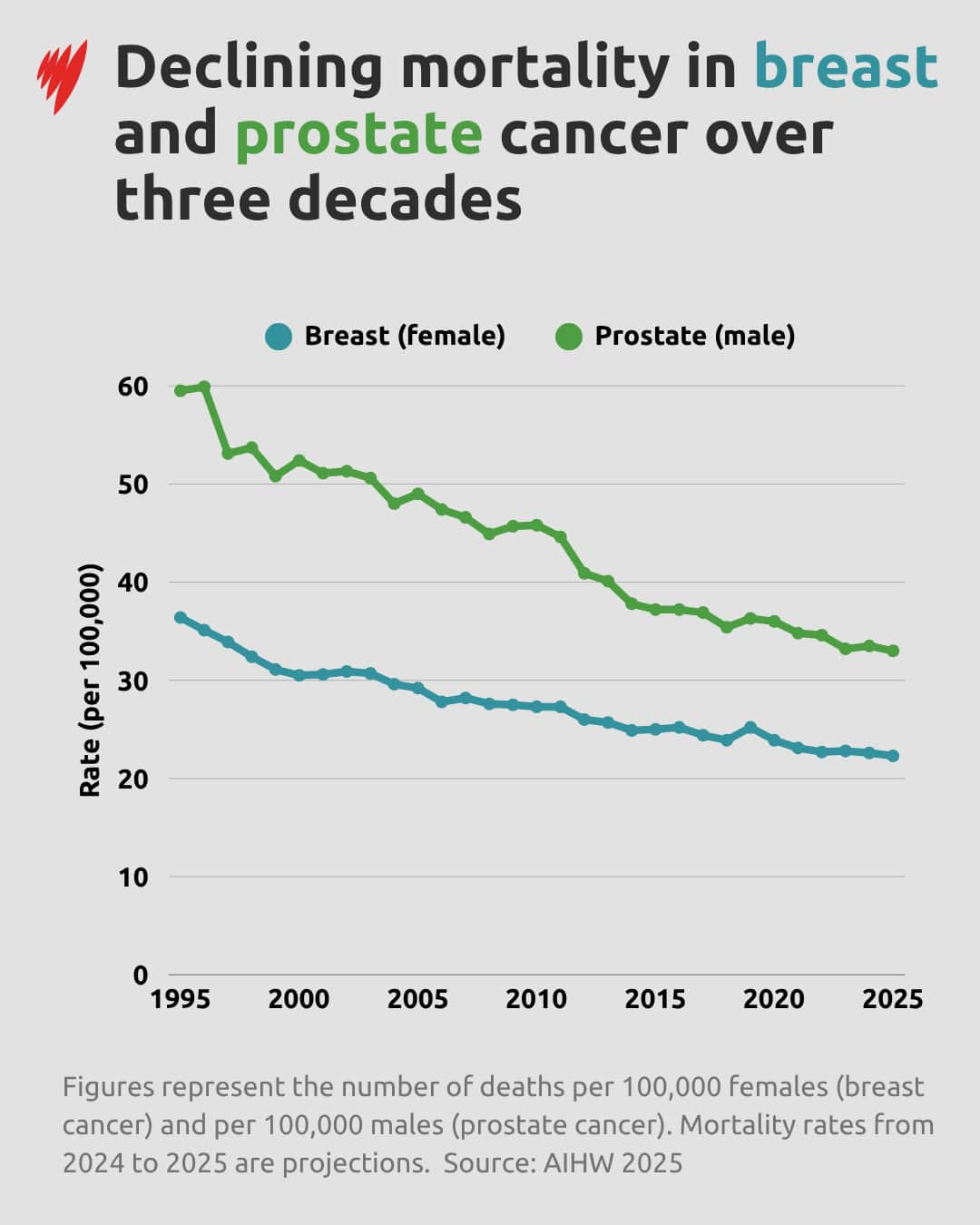
Source: SBS News
Lung cancer, while the fourth most commonly diagnosed cancer in Australia this year, is responsible for more deaths than any other cancer and has the lowest five-year survival rate.
Rising cancer rates among young people
While outcomes are improving, the report also found cancer incidence rates for younger people aged 30 to 49 are increasing.
Overall, cancer rates for people in their 30s have risen from 121 to 135 cases per 100,000 people in Australia in the past 25 years.
For people in their 40s, rates have increased from 280 to 313 cases per 100,000 over the same period.
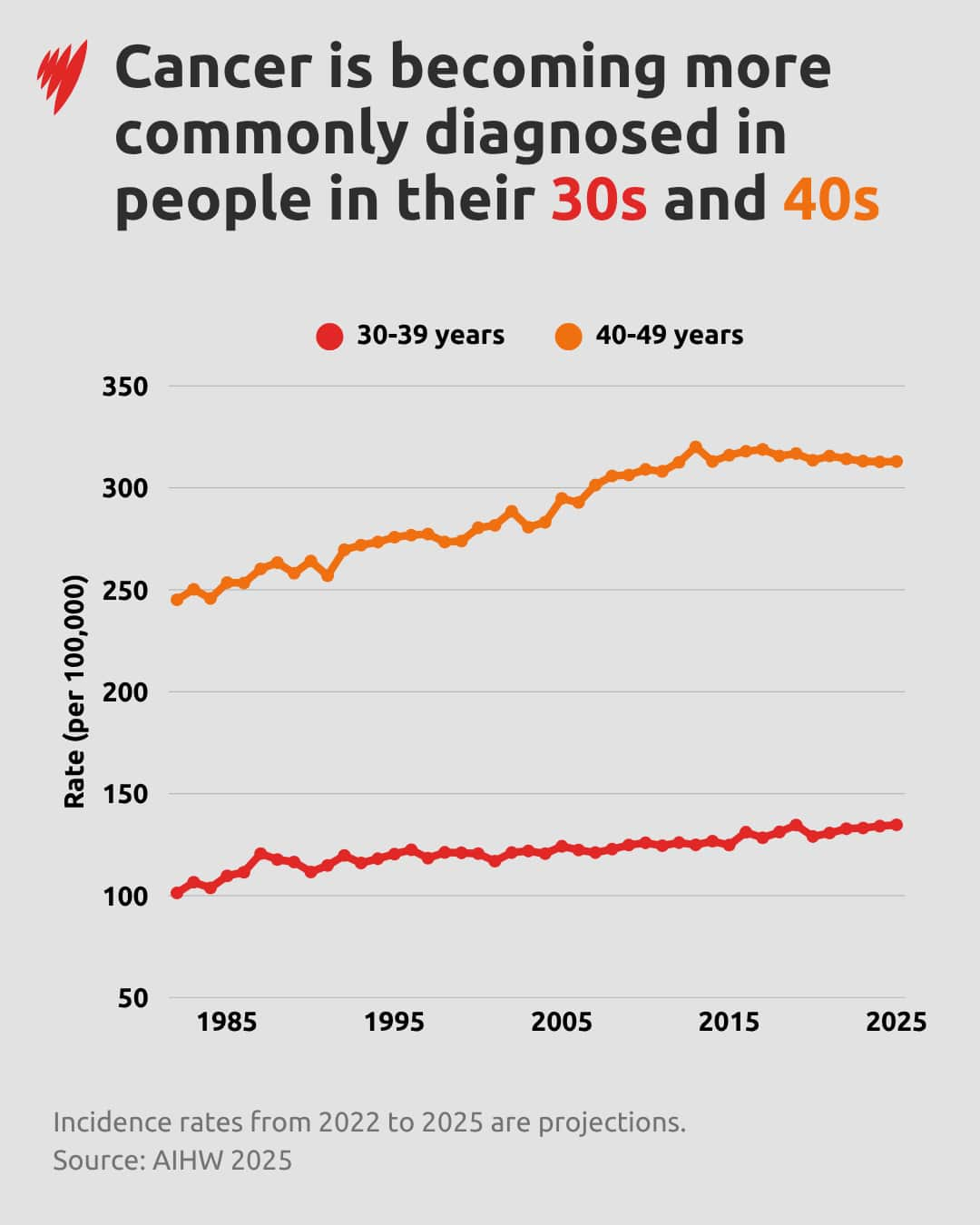
Source: SBS News
Stewart said it's not clear what's causing the rise in certain cancers among younger people, and trying to pinpoint what's behind it is complex.
In addition to concern about rising rates of some cancers among young people, Stewart said there is also concern about these cancers not receiving fast attention from GPs.
"The possibility of colorectal cancer [among people in their 30s and 40s] was virtually unknown and is now becoming increasingly a matter that has to be taken into account," he said.
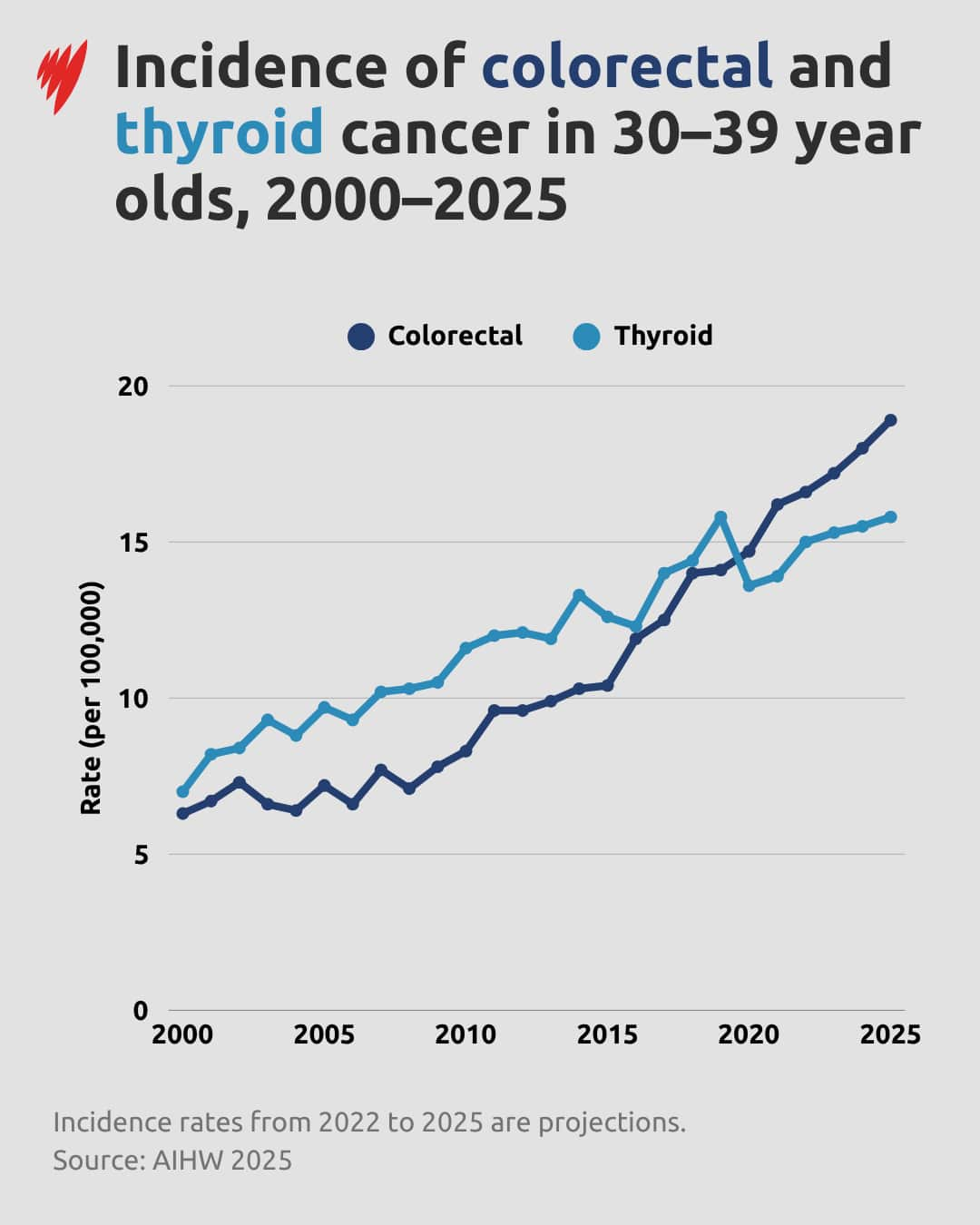
Source: SBS News
Melanoma rates
While younger people in their 30s and 40s have seen a significant decrease in melanoma of the skin since 2000, age-standardised rates for melanoma have increased across the population.
In the past 25 years, melanoma rates have increased from 54 to 63 per 100,000 people.
This rise is being driven by older age brackets, and melanoma rates for people under 40 have been decreasing since the late 1990s.
The report said public health campaigns like the Slip Slop Slap campaign had driven high awareness of skin cancer risks for people born after or around the time the campaign was released.
However, there are increasing rates of melanoma among older Australians — people who are likely to have spent more of their lives in times when there was less skin cancer awareness.
"Melanoma has been addressed vigorously in terms of prevention by making people aware of the role of sunlight and of course the Slip Slop Slap campaign — now extended to 'slide' on sunglasses and 'seek' shelter," Stewart said.
"That has been remarkably successful in this country."
Differences between men and women
Men are, overall, more likely to be diagnosed with cancer — although the gap between men and women has tightened since 2000.
In 2025, 727 men per 100,000 are estimated to be diagnosed with cancer, while 488 women per 100,000 are estimated to be diagnosed.
Prostate cancer is the most commonly diagnosed cancer for men and for Australians overall, and 29,000 cases are estimated to be diagnosed this year.
Meanwhile, breast cancer is the most commonly diagnosed cancer for women, and around 20,000 diagnoses are expected this year.
Share



